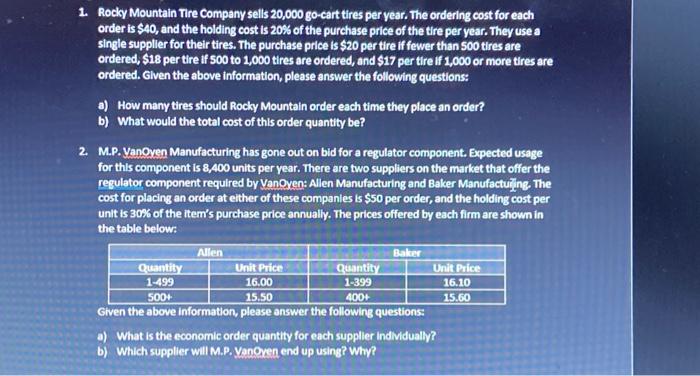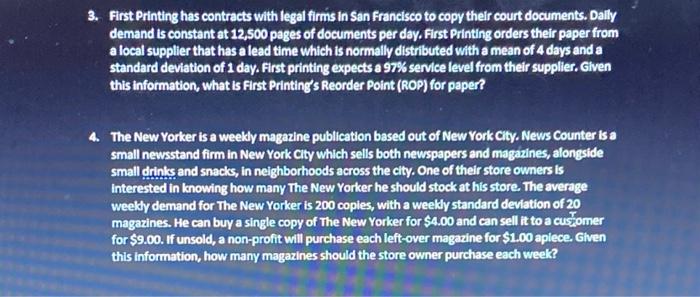1. Rocky Mountain Tire Company sells 20,000 go-cart tires per year. The ordering cost for each order is $40, and the holding cost is 20% of the purchase price of the tire per year. They use a single supplier for their tires. The purchase price is $20 per tire if fewer than 500 tires are ordered, $18 per tire if 500 to 1,000 tires are ordered, and $17 per tire if 1,000 or more tires are ordered. Given the above information, please answer the following questions: a) How many tires should Rocky Mountain order each time they place an order? b) What would the total cost of this order quantity be? 2. M.P. YanOven Manufacturing has gone out on bid for a regulator component. Expected usage for this component is 8,400 units per year. There are two suppliers on the market that offer the regulator component required by VanOyen: Allen Manufacturing and Baker Manufactuing. The cost for placing an order at elther of these companies is $50 per order, and the holding cost per unit is 30% of the item's purchase price annually. The prices offered by each firm are shown in the table below: a) What is the economic order quantity for each supplier individually? b) Which supplier will M.P. Yanoven end up using? Why? First Printing has contracts with legal firms in San Francisco to copy their court documents. Dally demand is constant at 12,500 pages of documents per day. First Printing orders their paper from a local supplier that has a lead time which is normally distributed with a mean of 4 days and a standard deviation of 1 day. First printing expects a 97% service levelfrom their supplier. Given this information, what is First Printing's Reorder Point (ROP) for paper? The New Yorker is a weekly magazine publication based out of New York City. News Counter is a small newsstand firm in New York City which sells both newspapers and magaines, alongside small driniss and snacks, in neighborhoods across the city. One of their store owners is Interested in knowing how many The New Yorker he should stock at his store. The average weekly demand for The New Yorker is 200 copies, with a weekly standard devation of 20 magazines. He can buy a single copy of The New Yorker for $4.00 and can sell it to a cusciomer for $9.00. If unsold, a non-profit will purchase each left-over magaine for $1.00 apiece. Given this information, how many magazines should the store owner purchase each week








